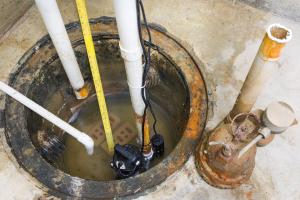
Maintaining Your Sump Pump: Essential Tips for Efficiency
When it comes to safeguarding your home against flooding, a reliable sump pump is your first line of defense. Regular maintenance is key to ensuring its optimal performance. Follow these essential tips to keep your sump pump in top shape and your basement dry.
1. Regular Inspections:
Routine inspections are crucial in identifying potential issues before they escalate. Check for any visible signs of wear and tear, and ensure the pump is sitting upright. Make sure the float switch moves freely and doesn’t get stuck.
2. Testing the Float Switch:
The float switch is a critical component that triggers the sump pump when water levels rise. Periodically test the switch by pouring water into the pit. The pump should activate and drain the water. If not, consider replacing the float switch to avoid malfunctions during heavy rainfall.
3. Cleaning the Pump and Pit:
Debris can accumulate in the pump and pit over time, leading to clogs and reduced efficiency. Regularly clean both the pump and pit to prevent such issues. Remove any dirt, gravel, or debris that may hinder the pump’s operation.
4. Check Valve Inspection:
The check valve plays a vital role in preventing water from flowing back into the pit after the pump has shut off. Inspect the valve for any signs of wear or malfunction. If necessary, replace the check valve to maintain the one-way flow and prevent potential flooding.
5. Lubrication of Moving Parts:
Like any mechanical system, proper lubrication is essential for smooth operation. Lubricate the pump’s moving parts as recommended by the manufacturer. This simple step can significantly extend the lifespan of your sump pump and reduce the risk of breakdowns.
6. Battery Backup System:
Power outages often coincide with heavy storms, increasing the risk of flooding. Installing a battery backup system ensures your sump pump continues to function even during electrical outages. Regularly test the backup system to guarantee its reliability when needed.
7. Professional Inspection:
While regular DIY maintenance is vital, it’s also wise to schedule a professional inspection annually. A qualified technician can assess the pump’s overall condition, identify potential issues, and perform any necessary repairs or replacements.
8. Ensure Proper Discharge:
Check that the pump’s discharge pipe is free from obstructions and directs water away from your home’s foundation. A properly functioning discharge system is essential for preventing water from seeping back into the basement.
Maintain a Sump Pump for Long-Term Reliability
Incorporating these maintenance tips into your routine will go a long way in ensuring the efficiency and longevity of your sump pump. Regular inspections, testing, and cleaning can prevent unexpected malfunctions and potential damage to your property.
Remember that proactive measures are key to avoiding costly repairs and water damage. By staying diligent in maintaining your sump pump, you can have peace of mind knowing your home is protected during heavy rains and storms.
For more in-depth guidance on maintaining a sump pump and other home improvement tips, visit DesigningTemptation.com. Their comprehensive resources can provide valuable insights to keep your home safe and well-maintained.

